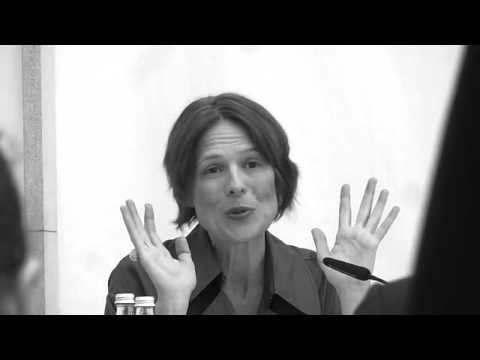Art as experience
26 de noviembre de 2010Doug Aitken: No History, 2005 – Colección Thyssen-Bornemisza Art Contemporary, Viena
In MOVE the current exhibition at the Hayward Gallery, a number of historical works point to the interest expressed by a number of artists in the early 1970’s, to develop works of art that literally served as interface to create an experience. Rather than the object itself, it is the participation of the visitor and the way the art object is performed, which is at the core of the artistic intent.
The most emblematic of those works are sculptures by Robert Morris. First exhibited at Tate in 1971, his Participatory Objects are to be interacted with; visitors are invited to climb on them, so as to have a different experience of gravity and of their body in the exhibition space. Franz West´s Paßstücke, a series he also initiated in the early 1970’s, suggest a different experience of the exhibition, by taking those sculptures and activating them. Meanwhile, Bruce Nauman’s corridor sculptures from the same period invited the museum-goer to insert their body into these contraptions, in order to get an experience predicated by constraint. This is something one also finds in the seminal “neo-concrete” work of Lygia Clark and Helio Oiticica, two Brazilian artists who also posited that the art object was to be a catalyst for a different experience of space, and one’s awareness of one’s own body. One thinks for instance of Oiticica’s famous Parangolé, a series of garments meant to be worn and hence, animated by the visitor, who was generating shapes with her/his movements.
This spirit has permeated the practice of art, blending the notion of performance with the one of sculpture, and further developing the notion of art as a literally transformative experience, which requires the active participation of the visitor. Many works in Pasajes can be related to these earlier experiments.
It is interesting for instance to trace this approach in the work of Doug Aitken, No History (2005). Whereas the artist had been primarily known until then for his intricate multi-channel video installations, this sculpture made of mirrors provides the visitor with a new perception of her/his presence in space, as well as a new experience of her/his surroundings. The inner part of the sculpture, with two long walls of motorized mirrors, constantly reconfigures its reflection of the environment, as well as the image of its visitor(s). Whereas a video implies a recording, the experience here is in real time, and no trace exists of the visitor’s presence, if only as a memory she/he will take away.
The tunnel-like structure of Carsten Höller’s Y (2003) functions in a similar kind of way: upon entering the walkway, the visitor is surrounded by the rotating movement of a thousand light bulbs, which gradually distort the sense of space, and produce a feeling of tumbling down a strange corridor that would lead to a new dimension.
Upon entering Monika Sosnowska’s M-10, one will also have an experience of space that is also meant to disrupt one’s senses in a similar kind of way. Opening doors, and moving forward into environment that gradually diminish in size while retaining the same structure – same doors, same lights, same generic wallpaper and carpet – the spectator becomes increasingly aware of the structure closing in on her/him, as if in a short story by Edgar Allan Poe.
In general terms, most of the works in that exhibition tend to function with the same dynamics, and denote a keen interest from the artists in the exhibition to establish their work as an interface that is meant to generate experience, as opposed to works one can just look at, contemplate, or ponder on. It is clearly the case with Olafur Eliasson, whose installation, Your Uncertain Shadow (colour), requires the visitors to interact with the projectors to create a multiplied shadow of their presence in the space. But one also needs to lift the receiver of the telephone in Janet Cardiff’s installation, in order to listen to her conversation about time and space with a scientist. Sitting at the desk, one also finds oneself in a somewhat awkward position with regards to the exhibition space and the other visitors. And while other works in the exhibition do not literally call for such a direct involvement, many do posit a type of relationship not predicated by the traditional way one may relate to a work of art. This dynamics is meant to make the visitor take ownership of her/his visit as an action, which in turn will hopefully provide a more personal experience of each work, and the possibility to build a complex experience of the exhibition, as a site of reflection.
In closing, it may also be interesting to refer to The Art of Participation: 1950 to Now, an exhibition that took place at SFMOMA in late 2008, and addressed concerns somewhat comparable to MOVE.




